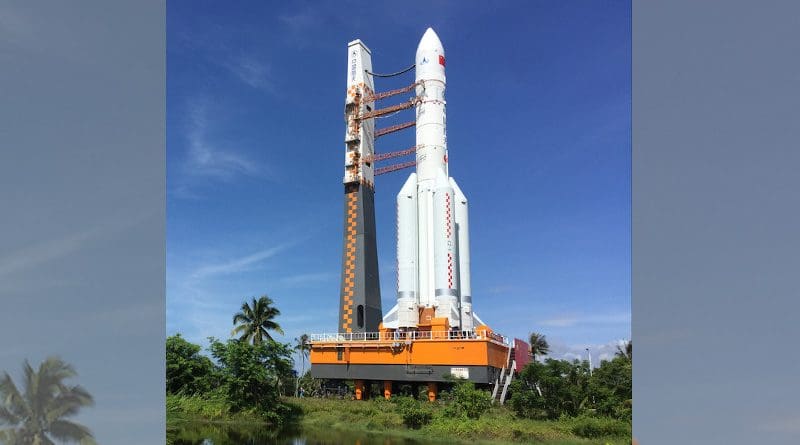Advancements In Transport Technology That Are Launching China To Top Of Space Race
“Today, China stands at another historical node, and in doing so faces new opportunities and challenges. The country must have the courage to seize these opportunities, continue to innovate, and make breakthroughs,” says Dr. Xiaojun Wang, President of the China Academy of Launch Vehicle Technology.
In 2021, China became the second nation to successfully land and operate an unmanned rover on Mars. Around the 2030s, China plans to become the first nation to send a Sample Return Spacecraft to Mars. These are only two of China’s milestones in its journey to become a top space nation. It has many more planned. To realize all those plans, China’s aerospace agencies have been working on innovative technologies for over 60 years. Crucial among these are the transportation systems, specifically, the launch vehicles.
In an article published in Space: Science & Technology, Dr. Wang explores China’s recent advances in space transportation systems, future prospects, and the challenges that remain to be met.
Over the past few years, with a new generation of space launch vehicles, China has launched rockets from the sea, sent multiple satellites into space, landed on the Moon and Mars, and conducted human spaceflight, garnering international attention. The latest among these launch vehicles, LM-11 of the Long March series, has a record-low preparation time of less than 24 hours, and is a great step towards meeting the rapid transportation needs that a space station will bring; China has begun the construction of its space station in low-earth orbit in April 2021.
To make its space program more environmentally sustainable, China’s aerospace agencies are upgrading toxic traditional petroleum-derived rocket propellant-based propulsion systems to liquid-based cryogenic propulsion systems—which uses cleaner fuels like hydrogen or oxygen—or the new high-power electric propulsion systems. Launch vehicles are also being made highly specific in terms of propulsion technology and efficient in terms of the thrust to weight ratios and engines, which could save energy and fuel expenditure and make missions safer. Reusable technology involving the control of landing zones and enabling horizontal take-off and landing are being developed as well, to reduce the junk generated by space missions as well as stay relevant on the global stage. Reusable launch technology will also enable China to stay competitive in the commercial space travel industry, which is rapidly gaining speed.
With deep space missions in mind, scientists are also working on developing lightweight metal composites that can withstand the test of time and improve the energy efficiency of vehicle bodies. This will be necessary for stellar and nuclear-powered crafts, which are the only known kinds of vehicles capable of exploring beyond the solar system.
Furthermore, scientists have combined the power of the latest advances in aerospace engineering with artificial intelligence to develop smart technology that can predict and identify errors during space missions and even take corrective steps as needed. Using big data and cloud computing, platforms that can offer better remote control and improved communications with spacecrafts, are being built. Space vehicle production, testing, launch, flight operation, reconfiguration, and docking are being automated.
With significant monetary investment and specific year-on-year targets for meeting each of these research developmental goals, spanning across the 2020s to the 2040s, China has set its sights on becoming a powerful space nation by the first half of this century. It even plans to set up a manned base station on the moon and a space solar power station to better power its space products.
From single satellite launch vehicles to manned spacecrafts, from near-Earth orbit missions to deep space exploration, China’s space transportation systems have developed by huge leaps in the last few decades and will continue to do so in the decades to come.
“China seeks to intelligently empower aerospace transportation systems, create efficient propulsion technologies, and develop digital management systems to realize its goal of emerging as a space power nation, China will devote itself in peacefully developing the space and encouraging international cooperation” says Dr. Wang.
Space may be where humanity’s future lies. And with this acceleration in the development of space technology, China is launching itself to the top of the race to get there.

